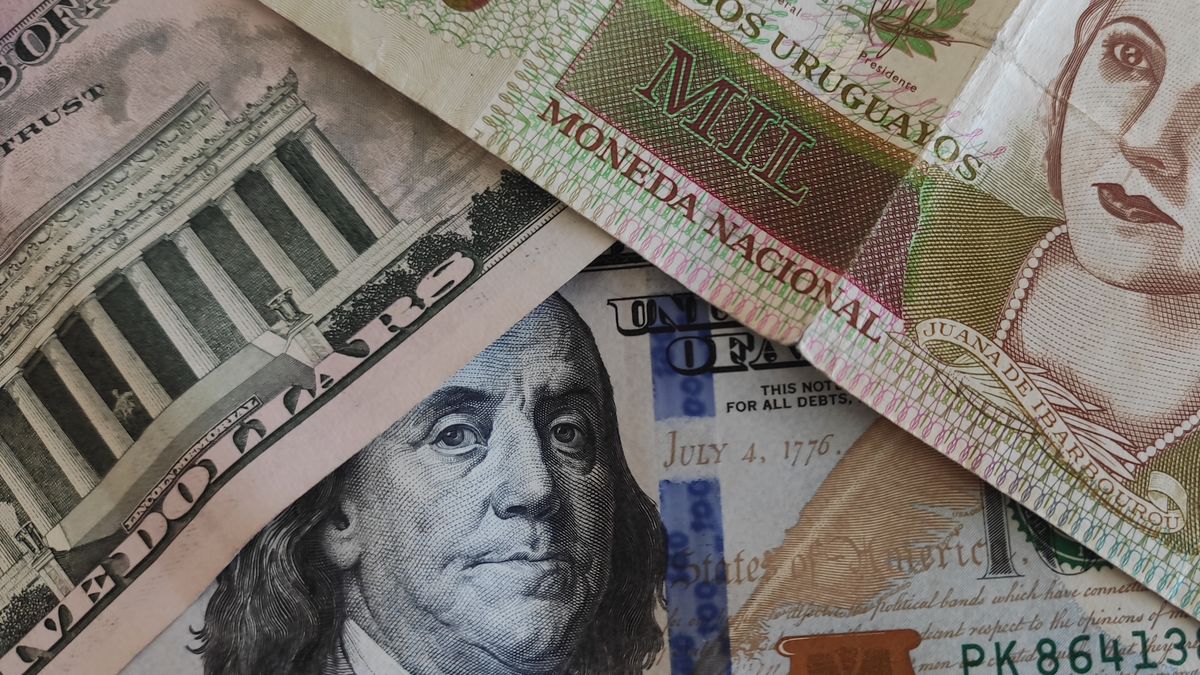He dollar can’t get on Uruguay. Although it has remained relatively stable for almost a month, the slight rises are not even enough for the US currency to break through the floor of 39 pesos. In this context, the exchange rate lag continues to be a concern in terms of competitiveness. What do the different sectors think about this problem?
Although it accumulates a minimum rise of 0.021% during May, the appreciation of the dollar seems to be more and more a utopia for the Uruguayan economy. In return, the weight appreciation It is the almost nightmarish reality experienced by producers and agro-export sectors, who are unable to trade competitively in the international market.
Greater competitiveness for the field
He agro-export sector It is one of those that suffer the most from the exchange rate delay and the decline in the dollar which, so far this year, has fallen by 3.19% —2.56% year-on-year at the close of yesterday’s trading session.
Because of this, the outgoing president of the Rural Federation, Martin Uria, claimed in the recent Annual Congress of the entity, that the government is working seriously on the issue — “a determining factor that deteriorates the competitiveness” of the sector — with reforms that allow a “more competitive economy”.
The then president of the Rural Association of Uruguay (ARU), Gonzalo Valdésin dialogue with Scope.com, when he pointed out that the exchange rate delay is “withering” for the export sector.
By the end of 2022, the Central Bank of Uruguay (BCU) established that the dollar was 12% behind the recommended value, while the rural entity was already pointing to a delay of 20%. At the beginning of April, this delay had already been updated to 25% by Valdés, not counting inflation. At that time, the former president of the ARU maintained that the US currency should be worth 48.31 pesos, almost 10 pesos more than its current price.
The delay is more than 10 pesos, according to the Big Mac Index
At the beginning of the year, the British magazine The Economist launched a new Big Mac Indexan indicator that compares more than 50 world currencies in relation to the famous hamburger, with the aim of registering the difference in the valuations of the currencies.
In the updated index, the exchange rate delay in Uruguay was evident, with the peso unusually strengthening against the dollar, to the point of remaining as the second most overvalued currency in the worldjust behind Swiss, at least among the countries considered.
Likewise, according to a study by The Economist, the dollar It should have a value of 50 pesos. At the time of the publication of the index, the US currency was worth 39.13 pesos, while at the close of the day yesterday, the price marked 38.791 pesos, further deepening the mismatch of the exchange rate.
The Uruguayan peso, one of the most overvalued among emerging markets
The dollar in Uruguay is falling even after having registered in 2022 biggest annual drop since 2009, so the outlook is far from encouraging. And the peso may have even more upside potential amid the fight to control inflation, as pointed out by the BCP Securities.
This makes the weight “one of the most overvalued currencies in emerging markets”, says the US entity. “More than a year of monetary tightening has created a combination of a stable currency and high inflation. As a result, the currency will have to adjust. In the short term there is no catalyst on the horizon”, explained BCP Securities. This is not positive news for the sectors that claim to solve the exchange rate delay.
The government remains between positive explanations and hopes of alignment
From the Executive power, and during the first months of the year, they did not tire of aiming at the record year of exports as one of the major factors behind the appreciation of the peso: the exceptional entry of dollars increased the supply of this currency and lowered its price with respect to the local currency.
This was also explained by the Minister of Livestock, Agriculture and Fisheries (MGAP), Fernando Mattosfor whom the excellent placements generated downward pressure on the dollar, to which was also added the high level of investments in the country.
The explanation of the excess supply without a correlative demand was also adhered to by the Minister of Economy and Finance (MEF), Azucena Arbeleche. To face this scenario, the official had requested that all the players that demand dollars, both private and public, go to the market in search of the US currency, in order to balance the balance and, therefore, reduce the gap in the rate exchange.
For his part, the head of the BCU, Diego Labat, He maintained that the dollar will align in the coming months —businessmen expect a dollar of 41.50 pesos by the end of the year, according to the Economic Expectations Survey of the central bank.
For the president of the monetary authority, the misalignment of the dollar is around 8% or 9%. “One would expect that over the months this misalignment would recover,” Labat considered last February, although he clarified that “what happens with the exchange rate will be what emerges from the market,” given that there is a regime free floating. It should be noted that these sayings were prior to the Monetary Policy Committee (Copom) decided to lower interest rates by 25 basis points, to 11.25%, and then keep them frozen in May.
Source: Ambito




